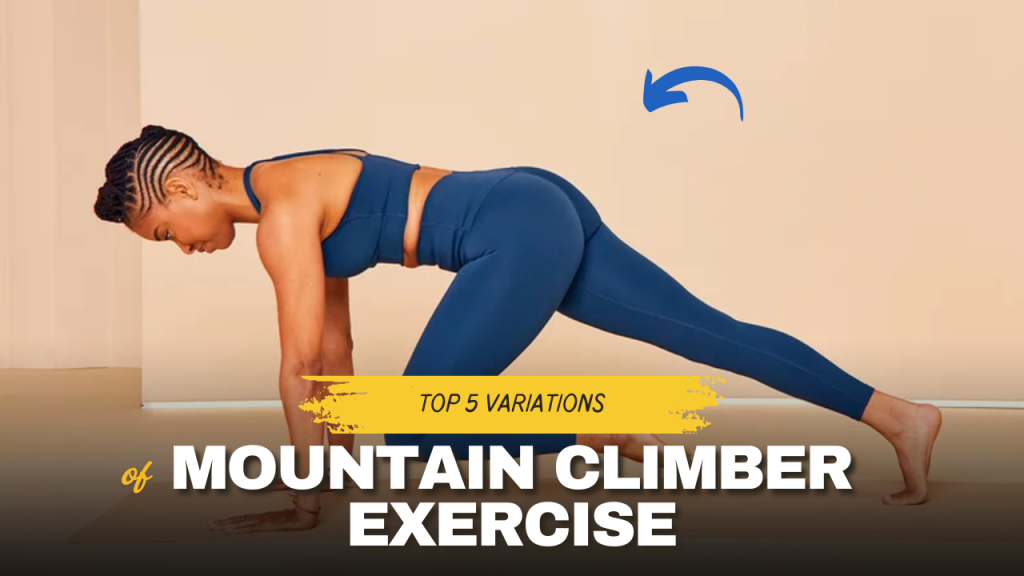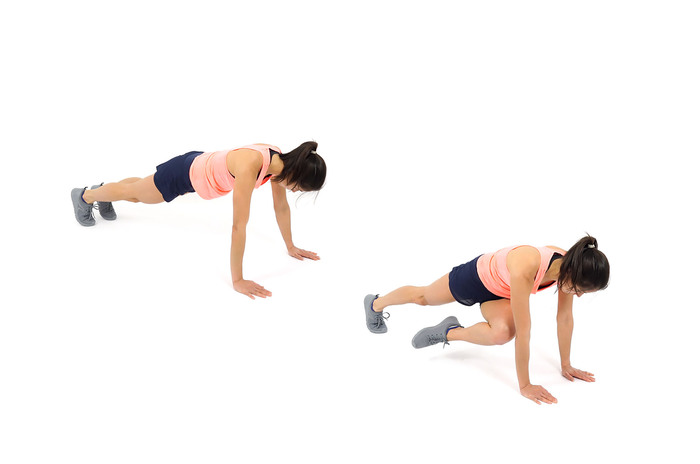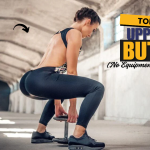“One move, endless burn.”
That’s the power of a mountain climber exercise—a deceptively simple movement that packs a cardio punch, torches fat, and activates your entire core.
But did you know the traditional mountain climber is just the beginning? Like most effective bodyweight exercises, there are variations that can challenge your strength, mobility, balance, and endurance in entirely new ways.
In this guide, we’ll break down the top 5 most effective and unique variations of the mountain climber—perfect for those wanting to upgrade their workouts without any equipment. Whether you’re a beginner or a fitness junkie, these will help you level up fast.

What Happens After 30 Days of Mountain Climber Variations
| Benefit | What You’ll Notice |
|---|---|
| Fat Loss & Calorie Burn | Reduced body fat, especially around the midsection with consistent training + diet |
| Stronger Core | Improved core stability, balance, and visible muscle tone in the abs |
| Improved Endurance | Increased stamina during workouts and daily activities |
| Better Mobility & Flexibility | Enhanced hip mobility and reduced stiffness, especially from Spider Climbers |
| Better Posture | Strengthened back and core muscles support an upright, balanced posture |
| Full-Body Toning | More definition in arms, legs, shoulders, and glutes |
| Faster Reaction Time | Quicker coordination and improved agility from explosive movement patterns |
| Mental Toughness | Better focus, discipline, and motivation as endurance builds over time |
Did You Know?
The mountain climber exercise has its roots in military-style training and has been used for decades to build explosive strength and agility—especially in confined spaces.
1. Cross-Body Mountain Climbers
Targets: Core (especially obliques), shoulders, and hip flexors
Best for: Sculpting your waist and improving rotational strength
This twist on the classic climber involves driving your knee toward the opposite elbow. The rotational movement fires up your obliques, making it a killer core sculptor.

How to do it:
- Start in a high plank position.
- Drive your right knee under your body toward your left elbow.
- Quickly switch, bringing your left knee to your right elbow.
- Continue alternating with control and speed.
Fitness Myth Debunked:
Many believe core work equals crunches. In reality, dynamic, functional movements like this torch more fat and engage deeper core stabilizers than static ab routines.
2. Spider Mountain Climbers
Targets: Core, glutes, and inner thighs
Best for: Boosting hip mobility and targeting the lower belly
This variation mimics the movement of Spiderman crawling—engaging your hips and thighs deeply while keeping the core tight.

How to do it:
- From plank, bring your right knee outside your right elbow.
- Keep your foot close to the floor.
- Return and repeat with the left knee.
- Alternate sides in a controlled rhythm.
Interesting Fact:
Spider climbers can increase flexibility in the hip joint, making them especially beneficial for those with tight hips from sitting too long.
3. Slow-Mo Mountain Climbers
Targets: Core, triceps, and deep stabilizers
Best for: Perfecting form and building muscle control
Speed isn’t everything. Slowing down the mountain climber can amplify the time-under-tension and enhance mind-muscle connection.

How to do it:
- Begin in a high plank.
- Slowly bring your right knee forward over 2–3 seconds.
- Pause, then return.
- Repeat with the left leg.
Pro Tip:
Use this variation as a warm-up or burnout finisher. Slow reps reveal weaknesses and improve form more than high-speed sets.
4. Elevated Mountain Climbers
Targets: Core, chest, and arms
Best for: Beginners and those easing into core workouts
By placing your hands on a sturdy surface like a bench or step, this variation reduces the load on your wrists and allows better control.

How to do it:
- Place your hands on a stable elevated surface.
- Maintain a straight line from head to toe.
- Drive your knees toward your chest one at a time, picking up speed gradually.
Myth Buster:
Modifications aren’t just for beginners. Even elite athletes use elevated variations to isolate muscles and recover from injury more safely.
5. Mountain Climber with Shoulder Tap
Targets: Core, shoulders, and coordination
Best for: Balance, core isolation, and full-body engagement
Adding a shoulder tap after each leg drive forces your core to stabilize and prevents side-to-side rocking.

How to do it:
- In a plank, drive your right knee forward.
- Pause and tap your left shoulder with your right hand.
- Return to plank, then alternate.
- Move with intention—not momentum.
Why It Works:
This move lights up the transverse abdominis—the deep core layer responsible for posture and spinal protection.
Final Thoughts: Why Mix It Up?
Your body adapts fast. If you’ve been doing standard mountain climbers forever, it’s time to challenge new muscle fibers, improve your agility, and boost fat loss by adding these variations.
From rotational strength to balance and mobility, these five forms ensure you’re training smarter, not just harder.
Quick Recap: The 5 Variations
- Cross-Body Mountain Climbers – For obliques and waist-slimming
- Spider Climbers – For hips and lower abs
- Slow-Mo Climbers – For control and deeper core work
- Elevated Climbers – For beginners and precision
- Climbers with Shoulder Tap – For stability and coordination
Remember: A strong core isn’t built on crunches alone. It’s the result of movement, intensity, and variety. So the next time you’re in plank position, don’t just climb—climb with purpose.
Frequently Asked Questions (FAQs)
Are mountain climber variations suitable for beginners?
Yes, absolutely. Variations like elevated mountain climbers are beginner-friendly and can help you build foundational strength and coordination. Start slow, focus on form, and progress as you gain confidence.
How many reps or sets should I do for each variation?
You can start with 30 seconds per variation for 2–3 rounds, resting 30 seconds between sets. For strength-focused variations like Slow-Mo Climbers, aim for 8–10 reps per leg with controlled form.
Can I do mountain climber variations every day?
While mountain climbers are bodyweight exercises, doing them daily could lead to overuse injuries, especially if done with poor form. 2–4 times per week is optimal for results and recovery.
Do mountain climber exercises burn belly fat?
They help burn calories and strengthen your core, but no exercise alone burns fat from a specific area (spot reduction is a myth). Combine climbers with a healthy diet and full-body workouts for best results.
Do I need any equipment for these variations?
No equipment is required for most. However, an optional elevated surface (like a bench or step) may be used for the elevated variation. Otherwise, a yoga mat for cushioning is all you need.
Are mountain climbers safe for people with lower back pain?
If done with proper form, they can strengthen the core and support spinal health. However, those with back pain should consult a professional and may benefit more from slower, controlled variations to avoid excessive strain.
Can mountain climbers replace cardio workouts like running?
They can be a high-intensity alternative to traditional cardio. When performed in intervals, mountain climbers elevate your heart rate, improve endurance, and torch calories—often in less time than running.





